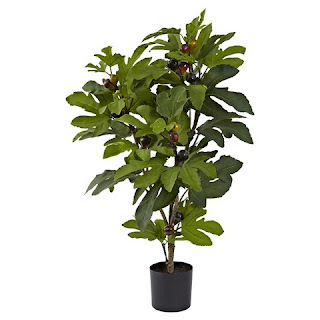Ecology the environment and The Fig Tree - from Voce Italiana
Fig trees and ecology.
My Italian mother (Elda Anselmi) routinely tried growing a fig tree in our Baltimore, Maryland back yard. Although the tree would grow for a few years, for unknown reasons, it didn't survive to grow very big. Nevertheless, this column in Voce Italiana, found in the newsletter of the Holy Rosary Church, in Washington DC, brought back those fig tree memories, and what they meant about our obligation to support a healthy environment.
In the article, the newsletter's editor, Father Ezio Marchetto, C.S., correlates The Fig Tree with the culture of ecology, the branch of biology that deals with the relations of organisms to one another and to their physical surroundings..
Voce Italiana is the Italian American Gazette of the greater Washington DC area. Voce Italiana is the oldest Italian American newspaper in the Nation's capital (Washington DC).
Voce Italiana is the Italian American Gazette of the greater Washington DC area. Voce Italiana is the oldest Italian American newspaper in the Nation's capital (Washington DC).
In fact, Father Ezio Manchetto didn't write about the kind of fig tree where Jesus saw Nathanael in the Gospel of John (1:48).
Nor did he write about the one Jesus used in the parable in Luke (21, 29-30); or the one that Jesus cursed in Matthew (21, 19-20); not even the one in Mark (13,28). Yes, all four Evangelists speak about fig trees.
Instead, he wrote about the fig tree many Italians grew in their backyards (like Elda Anselmi!); the one they felt sorry for when it didn't survive the past winter (like Elda Anselmi!). the one the Italians kept mentioning that they had to make sure they had to plant in a new square to be built (probably) behind the church. Indeed, the fig tree isn't just a "tree". It's a connection with the Italian heritage. It's something that has a meaning well beyond what a tree is. It's something Italians care for deeply, writes Manchetto.
It is this connection between nature and ourselves (Italians and others) that Pope Francis wants us to remember, celebrate and expand. First, with the wonderful encyclical Laudata Si, and then, with the proclamation of a "World Day of Prayer for the Care of Creation", to be celebrated every September 1st.
In his letter, Pope Francis says, "As Christians, we wish to contribute to resolving the ecological crisis which humanity is presently experiencing." For need to always keep in mind that, for believers, the life of the spirit is not dissociated from the body or from nature or from worldly realities, but lived in and with them, in communion with all that surrounds us (Laudato Si, 216).
An annual World Day of Prayer for the Care of Creation will offer individual believers and communities a fitting opportunity to reaffirm "their personal vocation to be stewards of creation, to thank God for the wonderful handiwork that he entrusted to our care, and to implore his help for the protection of creation, as well as his pardon for the sins committed against the world in which we live."
As Italians and all people, especially of Italian descent, we always feel a sense of pride for our vegetable gardens, for the flower beds around our house, for the fruit trees and especially our fig trees.
They are what we plant, what we care for, what we grow and what we share with our friends and neighbors.
Father Marchetto writes that he believes we can be an inspiration to others to see nature as an integral part of who we are as human beings and as stewards of creation. It could be as simple as sharing our vegetables or our flowers with our neighbors, or showing how wonderful it is to handle soil, smell flowers and enjoy the produce of our work with and not against nature. (Laudato sie, mi Signore cum tucte le Tue creature - translation: "Be praised, my Lord, with all Your creatures." - St. Francis of Assisi, 1224).
Grazie, to Elda Anselmi (mama mia!), for teaching me how to prepare for protecting God's creation by her example, which included her repeated attempts to grow fig trees.
Labels: Father Ezio Marchetto, Holy Rosary Church, Pope Francis


0 Comments:
Post a Comment
<< Home